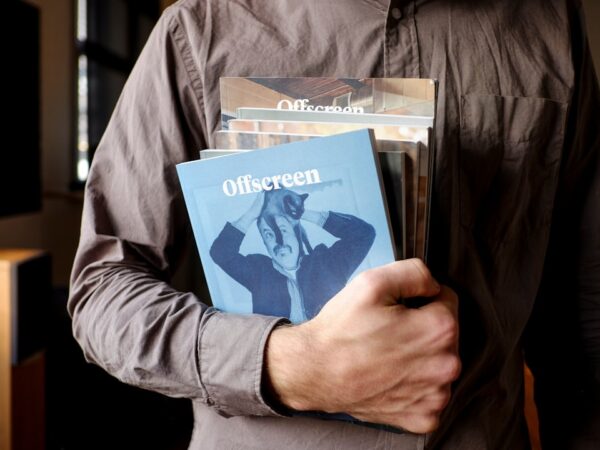
From Page to Screen: Book Adaptations That Transcend
Book adaptations refer to the process of transforming a written work, such as a novel or a non-fiction book, into a visual medium, such as film or television. This process has been a part of the entertainment industry for decades, with filmmakers and television producers recognizing the potential of bringing beloved stories to life on screen. The history of book adaptations can be traced back to the early days of cinema, with classics like “Gone with the Wind” and “To Kill a Mockingbird” being adapted from their respective novels.
Key Takeaways
- Book adaptations have been a popular source of material for films and TV shows for decades.
- Adapting a book to screen requires a delicate balance between staying true to the source material and making necessary changes for the visual medium.
- Classic novels like “To Kill a Mockingbird” and “Pride and Prejudice” have been successfully adapted into beloved films.
- Modern bestsellers like “Gone Girl” and “The Girl on the Train” have also been transformed into successful films.
- Adapting a book to screen comes with challenges, including condensing the story and characters, and dealing with fan expectations.
The Art of Adaptation: Turning Words into Visuals
Adapting a book to screen is a complex process that involves translating the written word into visual storytelling. The goal is to capture the essence of the story and characters while making necessary changes to fit the medium. Staying true to the source material is crucial, as fans of the book often have high expectations for how their favorite stories will be portrayed on screen. However, there is also room for creative freedom, as filmmakers and television producers have the opportunity to bring their own vision and interpretation to the adaptation.
Classic Novels That Have Made Successful Adaptations
There have been numerous classic novels that have been successfully adapted to screen, captivating audiences for generations. One example is “Pride and Prejudice” by Jane Austen, which has been adapted multiple times into films and television series. These adaptations have managed to capture the wit, romance, and social commentary of Austen’s novel, while also adding their own unique touches. Another example is “The Great Gatsby” by F. Scott Fitzgerald, which has been adapted into both film and television versions. These adaptations have successfully captured the glamour and tragedy of the Jazz Age.
Modern Bestsellers That Have Been Transformed into Films
| Book Title | Author | Year Published | Movie Title | Year Released | Box Office Gross |
|---|---|---|---|---|---|
| The Hunger Games | Suzanne Collins | 2008 | The Hunger Games | 2012 | 694.4 million |
| Gone Girl | Gillian Flynn | 2012 | Gone Girl | 2014 | 369.3 million |
| The Fault in Our Stars | John Green | 2012 | The Fault in Our Stars | 2014 | 307.2 million |
| The Girl on the Train | Paula Hawkins | 2015 | The Girl on the Train | 2016 | 173.2 million |
| Crazy Rich Asians | Kevin Kwan | 2013 | Crazy Rich Asians | 2018 | 238.5 million |
In recent years, there has been a trend of adapting popular modern bestsellers into films. One example is “Gone Girl” by Gillian Flynn, which was adapted into a critically acclaimed film directed by David Fincher. The adaptation stayed true to the dark and suspenseful nature of the novel, while also adding its own visual flair. Another example is “The Girl on the Train” by Paula Hawkins, which was adapted into a film starring Emily Blunt. The adaptation successfully captured the psychological thriller elements of the novel, keeping audiences on the edge of their seats.
The Challenges of Adapting a Book to Screen
Adapting a book to screen comes with its own set of challenges, as the mediums of literature and film/television are inherently different. One challenge is condensing a book’s content into a shorter format. Books often contain rich and detailed narratives, with multiple subplots and complex character development. Adapting these elements into a two-hour film or a limited television series can be a daunting task. Another challenge is balancing the needs of the story with the needs of the audience. Filmmakers and television producers must make creative choices that will engage and entertain audiences, while also staying true to the essence of the book.
The Role of the Director in Book Adaptations
The director plays a crucial role in bringing a book to life on screen. They are responsible for making creative choices that will enhance the story and engage audiences. A skilled director understands the source material and knows how to translate it into visual storytelling. They work closely with the screenwriter, cinematographer, and production team to create a cohesive vision for the adaptation. Some directors have become known for their successful book adaptations, such as David Fincher (“Gone Girl”) and Baz Luhrmann (“The Great Gatsby”).
The Importance of Casting in Book Adaptations
Casting is another important aspect of book adaptations, as it can greatly impact the success of the adaptation. The right actors can bring the characters to life and make audiences emotionally invested in the story. On the other hand, miscasting can lead to a lack of believability and disconnect between the audience and the characters. There have been examples of both successful and unsuccessful casting choices in book adaptations. For example, the casting of Daniel Radcliffe as Harry Potter in the “Harry Potter” film series was widely praised, as he perfectly embodied the beloved character from J.K. Rowling’s books. On the other hand, the casting of Tom Cruise as Jack Reacher in “Jack Reacher” received criticism, as he did not match the physical description of the character from Lee Child’s novels.
The Impact of Technology on Book Adaptations
Technology has greatly influenced the way books are adapted to screen. Advancements in visual effects have allowed filmmakers and television producers to bring fantastical worlds and creatures to life in a more realistic and immersive way. For example, the “Harry Potter” film series used visual effects to create magical spells, flying broomsticks, and mythical creatures. Additionally, technology has made it easier for filmmakers and television producers to adapt complex narratives with multiple timelines or perspectives. For example, the television series “Game of Thrones” successfully adapted George R.R. Martin’s epic fantasy series by utilizing visual effects and intricate storytelling techniques.
Book Adaptations That Have Transcended Their Original Source Material
There have been instances where book adaptations have become more popular than the original book itself. One example is “The Shawshank Redemption,” which was adapted from a novella by Stephen King. The film received critical acclaim and has since become a beloved classic, often ranked as one of the greatest films of all time. Another example is “The Lord of the Rings” film trilogy, which was adapted from J.R.R. Tolkien’s fantasy novels. The films were a massive success, both critically and commercially, and have become iconic in the fantasy genre.
The Future of Book Adaptations: What to Expect in the Coming Years
The future of book adaptations is an exciting prospect, as technology continues to evolve and the entertainment industry changes. Streaming services have already had a significant impact on book adaptations, with platforms like Netflix and Amazon Prime producing their own original content based on popular books. This has opened up opportunities for more diverse stories to be adapted to screen, as streaming services are not bound by the same restrictions as traditional film studios or television networks. Additionally, advancements in virtual reality and augmented reality may offer new possibilities for immersive storytelling in book adaptations.
In conclusion, the art of adapting a book to screen is a complex process that requires a delicate balance between staying true to the source material and making creative choices that will appeal to audiences. While there are challenges to adapting a book to screen, the success of many book adaptations proves that it can be done successfully. As technology continues to evolve and the entertainment industry changes, it will be interesting to see how book adaptations continue to evolve in the coming years.
FAQs
What are book to screen adaptations?
Book to screen adaptations refer to the process of adapting a book or novel into a film, television show, or other visual media.
Why are book to screen adaptations popular?
Book to screen adaptations are popular because they allow audiences to experience their favorite stories in a new and visual way. They also provide an opportunity for filmmakers to bring beloved characters and worlds to life on the big or small screen.
What are some examples of successful book to screen adaptations?
Some examples of successful book to screen adaptations include “The Lord of the Rings” trilogy, “Harry Potter” series, “The Hunger Games” series, “Game of Thrones” series, and “To Kill a Mockingbird.”
What are some challenges in adapting a book to screen?
Some challenges in adapting a book to screen include condensing the story into a shorter format, staying true to the source material while also making changes for the visual medium, and pleasing both fans of the book and general audiences.
What are some benefits of adapting a book to screen?
Some benefits of adapting a book to screen include the potential for increased exposure and revenue for the book, the ability to introduce the story to new audiences, and the opportunity to bring the story to life in a new and exciting way.
What are some criticisms of book to screen adaptations?
Some criticisms of book to screen adaptations include changes made to the source material, such as leaving out important plot points or characters, and the potential for the film or show to not live up to the expectations of fans of the book.


















